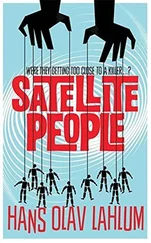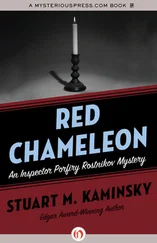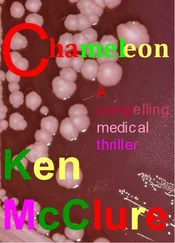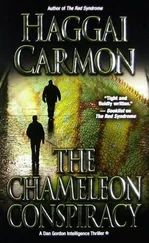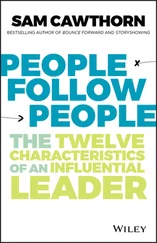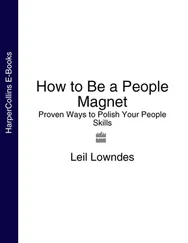The latter was said in a slightly tremulous voice.
I was deeply touched by Patricia’s concern in the midst of it all. I told her so, thanked her for her help so far and gave her a hug as I made to leave. Patricia’s reply was short: ‘Good. We will talk again tomorrow, then.’ But her cheek burned hot against mine, and I felt that our meeting had been unexpectedly successful.
It was only when I was at the door that I realized what we had not talked about, and that was Miriam. Patricia had not asked after her and I had not mentioned her.
Despite the new conclusions and Patricia’s warnings, as I drove home I thought less about the investigation and more about the dilemma I now found myself in. The magic and optimism of my renewed contact with Patricia receded as soon as I could no longer see or hear her. It felt almost as though I had been unfaithful to Miriam, simply by visiting Patricia without having asked her first. It reached the point by the end of the journey where, despite the progress we had made on the investigation, I regretted having gone and was more worried about what Miriam’s reaction might be were she to find out.
It seemed increasingly to me that the best solution for all parties would be if the case could be solved within a day or two, without Miriam ever needing to know about Patricia’s involvement. Patricia appeared to be happy with the situation and her role being kept secret, from Miriam as well, and obviously did not need any form of recognition. Miriam was happy when she could discuss the case with me, without knowing that I was also discussing it with Patricia.
My flat lay in darkness when I parked outside at half past nine. I had by then decided that the solution to my great dilemma would be that I would not tell Miriam about my visit to Patricia unless absolutely necessary, but that I would answer honestly if she asked if I had contacted Patricia.
The night was dark and there was a fine drizzle in the air. I sat indoors alone and stewed until about half-past ten, but did not manage to pull myself together enough to think systematically in any way about the case.
For the first time I found myself thinking it would perhaps be just as well if Miriam did not come as agreed, so that I could talk to her in the morning when I was rested instead. But I knew she would come: partly because she was curious about the case, but mostly because she had promised she would. And I was right, of course. Two minutes after the half-past-ten bus had passed, a familiar figure in a raincoat with a thick book in her hand emerged from the dark.
Miriam snapped the book shut as soon as I opened the door to the flat. ‘Sorry, the last meeting dragged on. Did young Vera Fredriksen bring the investigation any closer to a conclusion?’ she asked, before she had even taken off her shoes.
I had to tell her that Vera Fredriksen had unfortunately been killed herself before she had a chance to tell me anything and that the investigation was therefore now even more complex.
To begin with, Miriam was very sad to hear about young Vera’s death, but soon became increasingly interested to know what had happened.
I had tried to ease my bad conscience by preparing a late supper with the best food I could find in the fridge, which Miriam seemed to appreciate. She ate more than me, of course; I had already had a three-course meal, and was struggling with my guilt. Otherwise, everything went unexpectedly well. Miriam digested the food and the story of Vera Fredriksen’s death at the same time, and did not ask about Patricia. It struck me that the situation was the same as it had been at Patricia’s: Miriam did not ask, and I did not divulge.
I did not mention the explanation as to why the boy on the red bicycle had taken the murder weapon with him when he fled the scene of the crime. And I kept my worries about the man in the hat to myself. But I did say that it had struck me, before the results of the autopsy were clear, that one possibility was that both Eva Bjølhaugen and Vera Fredriksen had been drowned, using water from the bathroom.
Miriam was very impressed and said that the idea was a good example of my creative thinking when it came to investigations. There was a slightly awkward atmosphere when she said this, but it was the closest that we got to mentioning Patricia that evening. We quickly changed tack; it felt as though both of us wanted to.
On Tuesday, 21 March, I lay awake tussling with my conscience, long after Miriam had gone to sleep.
Around half past midnight, I changed my mind and came to the conclusion that I should have told Miriam about going to see Patricia as soon as she arrived. But Miriam was already deep in sleep by then. So I kissed her tenderly on the cheek and whispered that we would have to talk about it tomorrow. Shortly after, I fell asleep too, finally at some kind of peace with myself.
I woke once, briefly, during the night, when the man in the hat visited me in my dreams. In my dream, he threw a knife at me on Karl Johan Street. I woke up with a start, but the man in the hat was nowhere to be seen, and the woman I was engaged to was asleep in the bed beside me. That calmed me. For the rest of the night I slept the dreamless sleep of an exhausted man – a deep, contented sleep, without the faintest idea of what dramas tomorrow would bring.
DAY FIVE: A New Dimension – and Some New Leads
On Wednesday, 22 March 1972, I woke when the alarm clock went off at half past seven. I was clearly so full of adrenalin from the case that my need for sleep had diminished. I was wide awake and ready to face the new day within seconds of the alarm clock ringing.
Miriam, on the other hand, continued to sleep undisturbed, having cast a quick glance at the clock first. I was about to wake her again, but remembered that she did not have a lecture until a quarter past ten on Wednesdays. And I knew from experience that it was a bad idea to wake her unnecessarily early. Furthermore, I still had a lot to think about and a smidgen of a bad conscience. So I left her to sleep on and tiptoed out into the kitchen.
I ate breakfast alone with the newspapers, which made for less pleasant reading than the day before. The headlines were dominated by a new opinion poll that showed a fall in support for the anti-EEC movement, as well as stories on the Barents Sea agreement. It seemed that the agreement would be passed by a majority in the Storting on Friday afternoon and would be ready for signing by Monday. And in between the articles on the significance of the agreement, the reports about my investigation of the murder were becoming more critical. My name was not mentioned today, but both papers noted that the investigation was still ongoing and that the police would not divulge why.
Aftenposten found it reassuring that the police were taking the time to carry out a thorough investigation, even though a young man ‘from the east end, with a difficult background’ had been arrested and subsequently had taken his own life. Arbeiderbladet , on the other hand, questioned if this meant that the presumed killer had, in fact, proved to be innocent. The answer was that this certainly seemed to be the situation, and as such it was ‘a very dramatic development’ in the case.
Both papers carried small notices that a young woman had been found dead at Haraldsen’s Hotel in mysterious circumstances. Neither of them had as yet discovered her relationship to Fredriksen, or the story from 1932. And there was clearly a risk of longer reports once this became known.
I left home at ten to eight, having set the table for Miriam and written a note which read: ‘Did not want to wake you. Enjoy your breakfast and have a good lecture!’
Читать дальше

